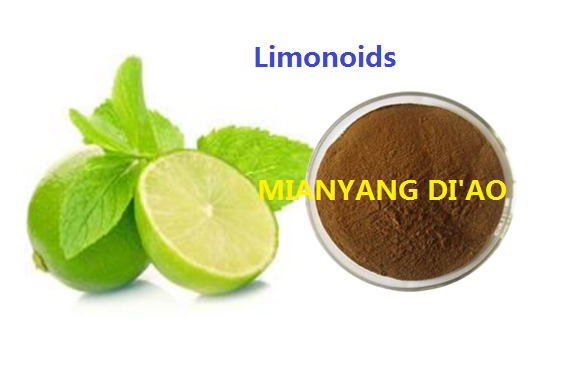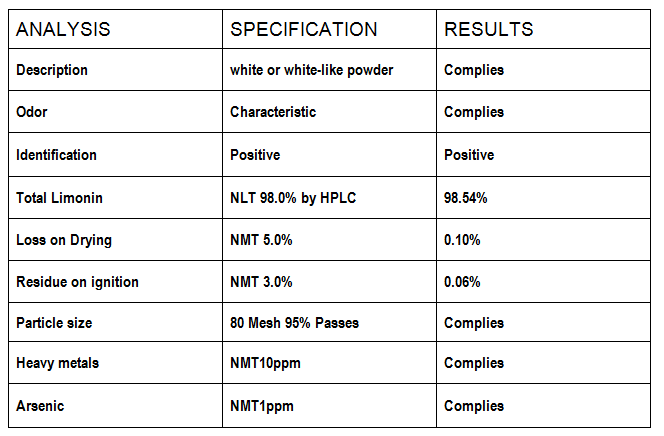Products
Limonoids


Limonoids are phytochemicals, abundant in citrus fruit and other plants of the families Rutaceae and Meliaceae. Currently, They are under investigation for possible effects in humans, although no proof of effect exists to date. Certain limonoids are insecticides such as azadirachtin from the neem tree. Chemically, they consist of variations of the furanolactone core structure. The prototypical structure consists of four six-membered rings and a furan ring. Limonoids are classed as tetranortriterpenes. Citrus fruits contain limonin, nomilin and nomilinic acid, while both neem seeds and leaves contain the limonoid azadirachtin, although higher concentrations are present in the former.
Limonoids are a group of chemically related triterpene derivatives found in the Rutaceae and Meliaceae families. Limonin is an intensely bitter limonoids that occur widely in citrus juices where its presence at above threshold levels generally detracts from juice quality. Studies have shown that the metabolically active form of limonin is limonoate A-ring lactone (LARL) which is nonbitter. LARL is synthesized in the leaves and translocated to the fruit and seeds. It is slowly degraded in the fruit to non-bitter products by at least two metabolic pathways. LARL undergoes acid catalyzed lactonization to limonin when the fruit tissues are disrupted in juice preparation. Group bitterness thresholds for limonin in orange juice have been reported to be in the 6 ppm range. On the other hand, individual thresholds as low as 0.5 ppm have been reported. In the latter study, 30% of the panel had thresholds of 2 ppm or below. While limonin content tends to be high in the juice from early-season navel, Shamouti, and Murcott oranges, available data indicate that levels of 2 ppm are not uncommon in commercial orange juice. Bitterness is modulated by juice properties including soluble solids, citric acid content and pH. In addition, several tasteless citrus flavonoids specifically suppress bitterness and increase juice acceptability, as do the flavanone glycoside derived dihydrochalcone sweeteners. The above areas are reviewed in detail and new developments in limonoids biochemistry are discussed.
